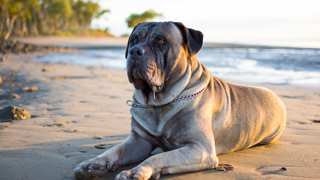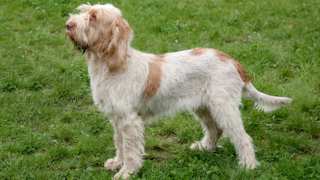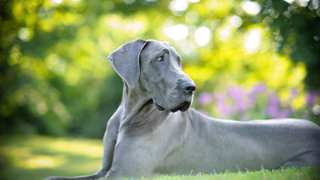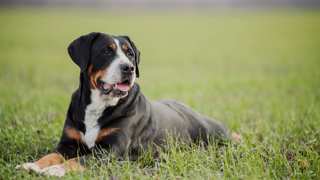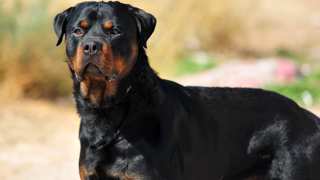The Tosa diet should include animal proteins, healthy carbs, vitamins, minerals, and omega fatty acids--nutrients every dog needs to maintain its health. This means the best Tosa food is premium dry kibble, as it contains balanced portions of the above-listed ingredients.
Tosa dogs do best with food formulated for giant breeds. Blue Buffalo and Nutro are recommended brands of giant-breed premium food.
Adult Tosa dogs will need about five cups of dry food per day, divided into two meals. Tosa puppies will need a bit less: depending on age, about 3½ cups per day, divided into three meals (not two) until seven months old.
For more info on feeding a Tosa, see the feeding chart below.
(NOTE: These dogs are prone to bloat, an often-fatal gastric condition that occurs when a deep-chested dog "wolfs" its food. Bloat often happens when a dog eats just before or after exercising, so owners are advised to allow an hour between feeding and exercise.)
Dog AgeDog WeightFood TypeAmountFrequency8-9 Weeks25 lbsDry (Puppy formula)0.75 cups3x/day4 Months45 lbsDry1 cup3x/day7 Months90 lbsDry1.25 cups3x/day10 Months110 lbsDry* (Puppy/Adult)2 cups2x/day12 Months125 lbsDry (Adult formula)2.25 cups2x/day14 Months+140 lbsDry2.5 cups2x/day*--Around this time, transition to adult food by mixing in adult formula with the puppy formula, in slowly increasing amounts with each meal, for one week.
Try if possible to stick to the above-listed portions. If constantly overfed (and under-exercised), these dogs will become overweight--and a fat Tosa will have numerous health problems and a shortened lifespan. You can help control your Tosa's weight by having consistent feeding and exercise schedules, by not feeding the dog table scraps, and by not leaving food in the dog's bowl all the time.
If you're worried your Tosa is overweight, try this simple test: run a hand along the dog's side, and if you can't feel any ribs, it's diet time--which means less food and more exercise!

